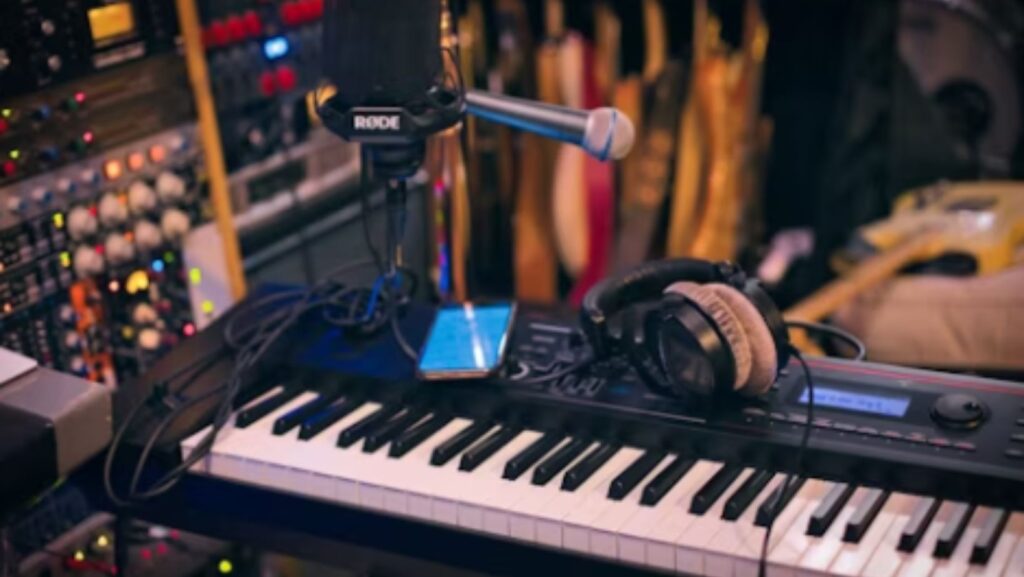
MIDI controllers have evolved into essential tools in the ever-changing field of music creation, bridging the digital and analog domains of musical expression. These adaptable gadgets provide tactile control over synthesizers, digital audio workstations (DAWs), and virtual instruments to musicians, producers, and DJs.
With the help of a MIDI controller, musicians can precisely release their creative potential by sculpting sounds and adjusting attributes. For all intents and purposes, a MIDI controller is a dynamic interface that allows an artist to work in real-time with digital instruments that help them fulfill their creative dreams.
We will examine important characteristics and factors to help you make a well-informed decision as we dig into the nuances of selecting the ideal MIDI controller in this article.
Understanding MIDI Controllers
Understanding MIDI controllers and their operation is crucial before beginning the purchasing process. Electronic musical instruments and other devices can all interact and synchronize with each other thanks to a system known as the Musical Instrument Digital Interface (MIDI).

Some of the examples of MIDI controllers include synthesizers, drum pads, MIDI guitars, and more. A lot of music production software and virtual instruments have assignable knobs, faders, buttons, and pads on this MIDI controller that let users adjust different parts of them.
Identify Your Needs
Finding the ideal MIDI controller requires first determining your unique requirements and preferences.
Are you a keyboard player trying to find a controller with keys that resemble piano keys? Or maybe you’re a DJ looking for a small controller with easy-to-use performance pads?

By having a clear understanding of your requirements, you can make the right decision.
While assessing MIDI controllers, a few key elements ought to be considered:
1. Keyboard Action
Choose a MIDI controller based mostly on keyboard action, especially if you enjoy playing the keys. The choice of synth-action vs weighted hammer action keys has a big influence on the tactile feel.
To provide a subtle touch for expressive performances, weighted hammer action keyboards mimic the feel of a conventional piano. Conversely, synth-action keys are perfect for electronic music producers who value quick, dynamic playability in their songs since they are made to be fast and responsive.

To improve the way you express yourself musically, select the keyboard action that best suits your playing.
2. Pad Quality
Producers and beatmakers place a premium on the pads of a MIDI controller. To get fine control over dynamics and expressiveness, use a controller with velocity-sensitive pads that react to different touch intensities.

Artists can create explosive beats and complex rhythms with ease thanks to these sensitive pads. A pad quality evaluation guarantees that your MIDI controller can produce the kind of precise performance required for expressive and subtle performances.
The best MIDI controllers come equipped with various assignable controls, like knobs, sliders, and buttons. These controls act as the courses through which artists exert real-time influence over their advanced instruments and software.
A controller with an adequate exhibit of programmable controls empowers users to control different parameters, encouraging a hands-on and intuitive way to deal with music creation progressively. The distinction between mechanized and touch-sensitive controls improves responsiveness, offering an elevated degree of communication.
4. Connectivity
Examine the quantity and configuration of assignable knobs, faders, and buttons on a MIDI controller before making a purchase. These components are essential for adjusting a variety of settings when producing music.
If you want to fine-tune other areas of your creative process, including effects or volume adjustments, you need a wide variety of tactile controllers. An intuitive interface made possible by the proper arrangement of knobs, faders, and buttons lets you precisely manage every subtle aspect of your production while transferring your musical thoughts into the digital sphere.
5. Build Quality and Portability
The frequently disregarded, yet essentially pivotal, part of a MIDI controller is its build quality and portability. A strong and well-constructed controller isn’t just a demonstration of longevity but guarantees dependability during elongated use.
Moreover, elements like illuminated buttons upgrade client collaboration, guaranteeing a pleasant musical journey even in low-light circumstances. The tactile experience of the controller stretches out beyond the keys, including each feature of its physical design for a vivid and enduring innovative partnership.
6. Additional Features and Software Bundles
Numerous MIDI controllers come packaged with software instruments, test libraries, or advanced sound workstations. Assess the included software and decide its importance to your music creation needs.

A few controllers likewise offer unique elements, for example, arpeggiators, harmony modes, or drum cushions, improving your innovative possibilities.
7. Portability
When selecting a MIDI controller, portability is an important consideration, particularly for people who travel or do live performances. Seek controllers that combine mobility and usefulness in a way that maintains vital functions while having a small, light design.
Making music on the go is made easier with a portable MIDI controller, which lets you bring your creative tools with you wherever inspiration strikes. It will be simpler to convey your musical ideas anytime, anywhere if you take into account your unique mobility demands and lifestyle.
8. Research and Compare
Once you know your needs and inclinations, conduct an intensive examination of the accessible choices. Browse online, watch demo recordings, and visit music stores to try out various controllers firsthand.
Focus on user feedback in regard to convenience, dependability, and overall performance.
9. Budget Considerations
Set a sensible financial plan for your MIDI controller purchase. While it’s enticing to pick the most element-rich controller accessible, consider whether you need every one of the fancy elements or a budget-friendly choice would do the work.

Remember that more extraordinary cost labels don’t necessarily equate to better quality or usefulness.
Bottomline
Picking the ideal MIDI controller is a fundamental part of upgrading your music creation setup. By focusing on the key elements referenced above, you can ensure that your controller lines up with your melodic inclinations and work process.
Set aside some time to research and test different products to find the MIDI controller that aligns with your style and your creative enunciation in the domain of music creation.












